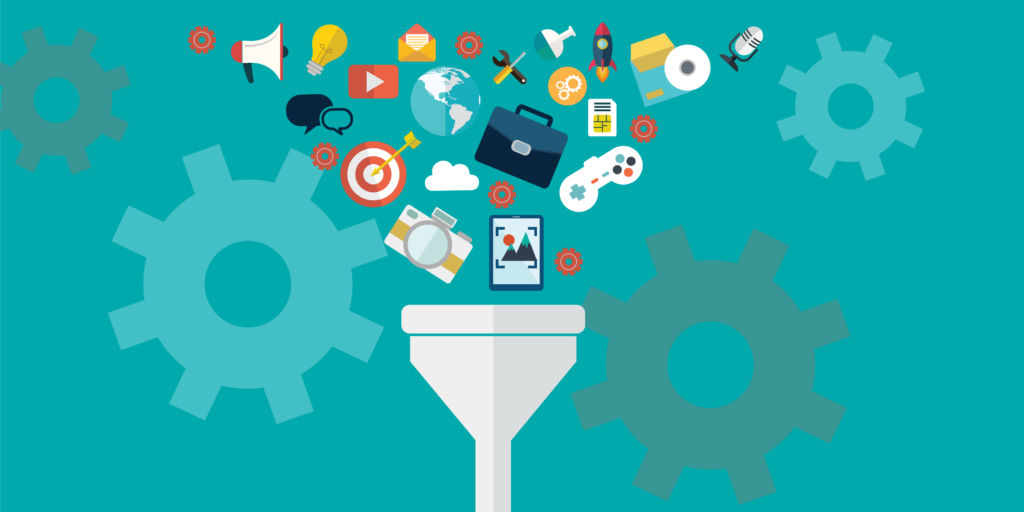
Most business leaders now understand the need to rely on data for better business decision making. But what exactly does that mean, and how can you achieve it?
Why Data Is Valuable for Decision Making

Let’s start with a look at what “data” is, and why it’s so valuable for decision making in a business. It refers to any kind of metrics that are measurable through observation. In businesses, this usually refers to metrics related to dollars, website visitors, customer retention rates, and other factors that could have an impact on your business’s success.
It is important because it’s objective; it’s concretely measurable in some way, and therefore can’t be the byproduct or misunderstanding. If your business generated $1,500,000 in revenue last year, it generated $1,500,000 in revenue last year—there’s no room for debate about whether it generated $8 in revenue or $3 trillion in revenue.
Of course, using data to make decisions in a business presents an additional layer of consideration: analysis and interpretation. Sure, your business may have generated $1,500,000 in revenue, but what does that mean, and how can you use this piece of information to set goals and improve the business in the future?
If you want to make better business decisions, you need to have better data, and a better interpretation of them.
Using the Right Tools

Everything starts with using the right tools. According to datapine, there are many types of business intelligence software that do a good job of helping you gather, consolidate, and interpret the most important data for your business’s decisions. There are many tools to choose from, so make sure you consider the following:
- First, you’ll need make sure you’re gathering data as accurately as possible. This depends not just on your dashboard, but all the individual sources with which it’s integrated.
- Are you able to count on this data dashboard to display data in real-time or function reliably?
- How much control do you have over the layout and integrations of this tool? Ideally, you’ll want something with as much customizability as possible. This way, you can tweak the tool to provide you exactly what you need—and filter out everything you don’t.
- You shouldn’t have to be a hardcore data scientist or an engineer to make use of your tools; they should be relatively easy to learn and use, even if your experience is limited.
- Finally, there should be built-in features that make data easier to communicate with others. For example, you might have access to information visuals that make your numerical information easier to interpret, or automated reporting tools that send reports to your intended recipients.
With the right platform in place, you’ll find it much easier to make well-informed, data-driven decisions on behalf of your business. There are companies available that can develop data-driven programs that are suited for your business. This can help drive the most accurate and lucrative results. Using DevOps you can ensure stability and reliability with Cloud-based environments and improve your time to market. Grid Dynamics, a leader in DevOps, will help strengthen the relationship between development and IT operations.
Qualitative vs. Quantitative Data

You’ll also need to consider the differences between qualitative and quantitative data. Quantitative data refers to those that can be quantified easily with numbers, while qualitative data is less concretely measurable. For example, quantitative is knowing that 72 percent of Americans like hot dogs. Qualitative data is knowing that people who don’t like hot dogs typically take issue with the texture or have ethical objections.
You’ll need both quantitative and qualitative data if you want to make better business decisions.
Overcoming Biases
Business decisions are often compromised because of human biases. All humans naturally suffer from a variety of cognitive biases that distort our perceptions and interpretations of even the most objective evidence. If left unchecked, these biases can distort how you perceive the most relevant data to your business.
Take confirmation bias as an example. Because of confirmation bias, we tend to disproportionately consider evidence that supports our previously held assumptions, and disproportionately throw out evidence that contradicts them. In other words, you might reinforce your own conclusion even when the evidence contradicts it.
You can overcome biases with the following:
- In many cases, simply being aware of your biases is enough to mitigate their effects. For example, if you’re aware that you’re disproportionately valuing evidence that already backs your existing conclusion, you can take note of that effect and try to downplay it.
- It also helps to treat numbers and reports as consistently as possible. Try to use the same methodologies, and apply the same line of reasoning, no matter the situation.
- Different people tend to be affected by different cognitive biases, so try to work with a group of people when partaking in data analysis. Are you all coming to the same conclusions? If so, that’s a much stronger position than a single person coming to a conclusion by themselves.
- Challenge seeking. It’s also valuable to seek out challenges to your existing assumptions and conclusions. Deliberately look for evidence that runs counter to your initial guesses; are you able to find this contradicting evidence?
Defining Your Objectives

If you want to make better business decisions, you first need to know which areas you’re targeting, and what you hope to achieve. What is it you want your business to do? Is there a specific challenge you want to overcome? Is there a goal you want to reach? You’ll need to work backward from these overarching objectives to uncover the problems that need solve—and the data that can help you solve them. Check Monday.com for more information.
Asking the Right Questions
Interpreting your data requires you to ask the “right” questions. Merely looking at the data isn’t going to make a brand-new conclusion jump out at you. Instead, you have to come forward with a hypothesis or an idea, then use it to verify or falsify that hypothesis or idea. Understand which questions are most relevant and valuable to your organization, and use them as lenses through which you can interpret the data.
Revisiting and Reevaluating

Finally, if you want to keep making good business decisions, based on data, you’ll want to keep revisiting and reevaluating your core assumptions. Keep taking new measurements and engaging in new analyses, and try to see your data (and your entire business) in a new light. The more you question, and the more you measure, the closer you’ll get to the truth.














